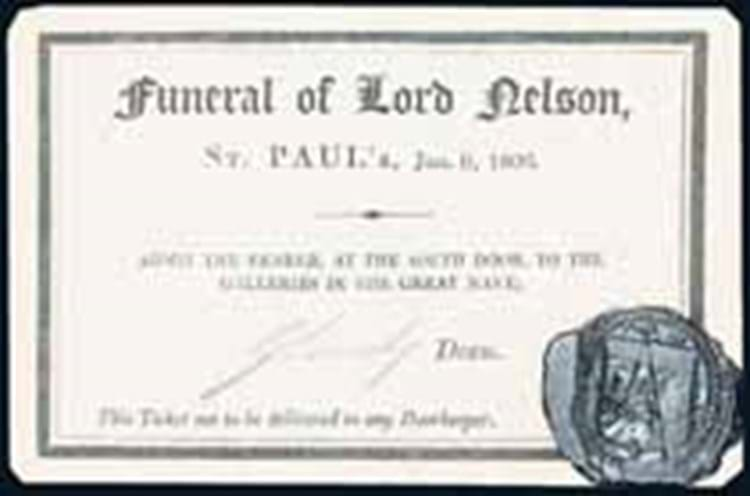
Pickled in a keg of naval brandy, it took more than two months for Nelson's body to arrive in Portsmouth from the Iberian Peninsula. He had reached London by the New Year and lay in state in the Painted Hall at Greenwich Hospital for four days, his funeral scheduled for January 9 1806.
It was the first state affair ever given to a commoner. The great procession - the coffin rowed up the Thames on Charles II's royal barge accompanied by over 60 other vessels - moved from Greenwich to Whitehall Stairs "in one of the greatest aquatic processions that ever was beheld on the river". From Whitehall the coffin moved through the streets to St Paul's on a carriage designed as a replica of HMS Victory, its miniature figurehead of Fame (acquired by the National Maritime Museum in 1938) holding aloft a laurel wreath. It is said that the sound of men removing their hats when the cortege passed was like the murmur of a wave breaking on the shore.
Six men from the Victory followed their admiral into the cathedral with the ship-of-the-line's Union flag, their orders to drop it into the crypt below to shroud the four coffins and a sarcophagus originally made for Cardinal Wolsey.
As they arrived in position, immediately under the centre of the great dome, a great ripping sound could be heard as they tore the flag into several pieces, each stuffing a keepsake inside his jerkin.
A rare memento of a momentous event was sold in the Lewes rooms of specialist militaria auctioneers, Wallis & Wallis on July 20.
The black-edged funeral invitation, smaller than a postcard, is applied with the black wax seal of the Shield of St Paul's and is personally signed by the Dean. It is also inscribed, This ticket must not be delivered to any Doorkeeper, in order, one supposes, to prevent it being sold outside immediately before the event. The hammer price of £1400 (plus 15 per cent buyer's premium) surpassed all expectations.




